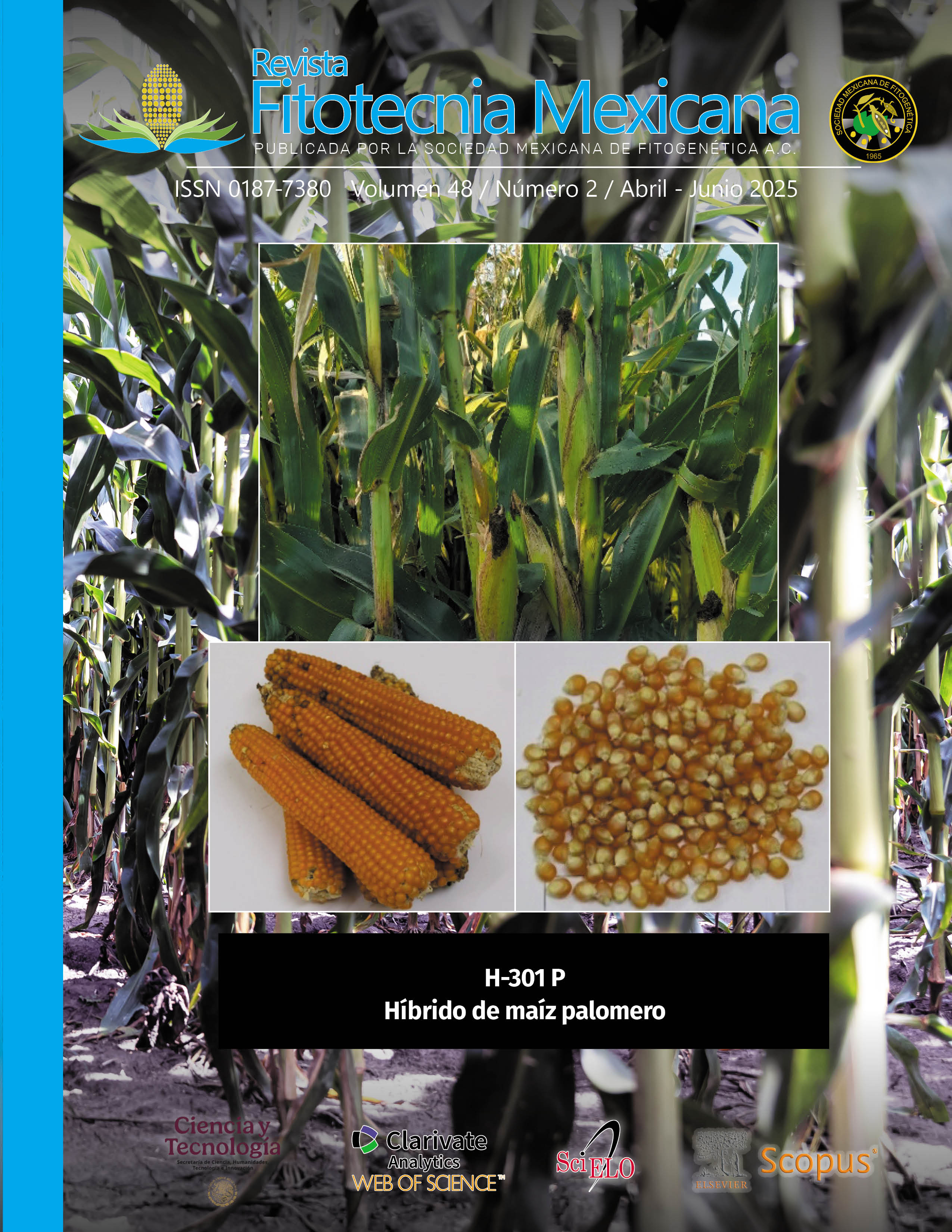RESISTANCE OF MAIZE GENOTYPES TO Tetranychus urticae KOCH AND ITS EFFECT ON MITE SUSCEPTIBILITY TO PESTICIDES
Main Article Content
Abstract
Maize is considered the main staple food for the population in Mexico, as it is part of the basic food basket, and it is an important component in the supply to the industrial and livestock sectors. A major threat to maize crops is the two-spotted spider mite (Tetranychus urticae), whose attack weakens and causes disease in the plants when fed, which in turn reduces grain production. Its ability to develop resistance to the pesticides used for its control makes its management difficult; an alternative is the use of resistant plants, which would help reduce dependence on acaricides. The objective of this study was to evaluate the effect of maize materials on the development of spider mites and, in turn, how this translates into the susceptibility of this mite to pesticides. Five maize genotypes (TecNM 86-Celaya, TecNM 144-R56, TecNM 93-DK, TecNM 96-Celaya and Criollo Celaya) were evaluated. The development time of each stage of T. urticae was determined, and leaf morphological traits such as thickness, hardness, and number of trichomes were measured. Regarding the effect of genotypes on pesticides susceptibility, a red spider colony was established, whose individuals were raised on the maize genotypes until reaching F3. The active molecules evaluated were abamectin, naled, bifethrin, and lambda cyhalothrin. Mortality was recorded at 48 h. Results showed that the TecNM 144-R56 genotype presented the longest life cycle, with an average of 14.38 days, while in TecNM 96-Celaya the lowest value recorded at 10.68 days. Genotype TecNM 86 Celaya was the material in which the lowest LC50 was presented for all the active ingredients under study, while the TecNM 144-R56 and TecNM 93 DK genotypes doubled the LC50 compared to the most susceptible material.

